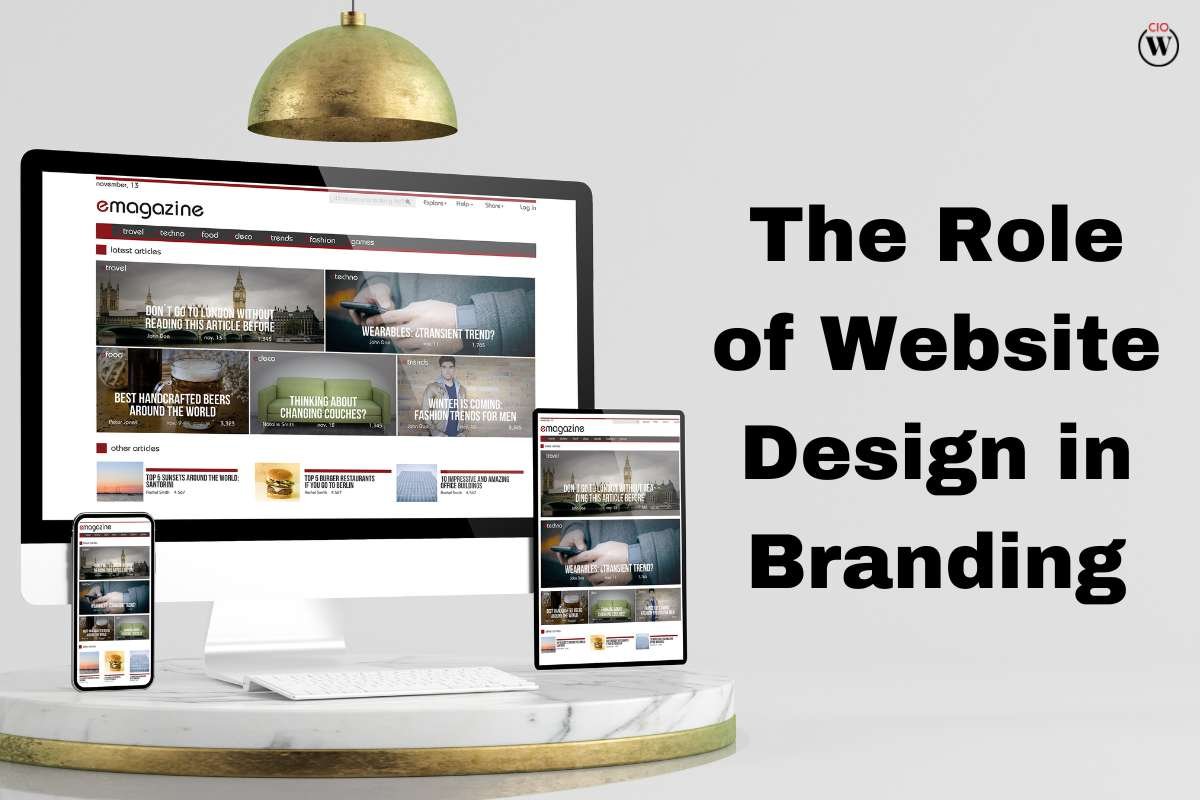Your website is a digital representation of your brand. The prospects will judge your brand based on your website, the layout, the products and services you offer, and the blogs you post on the website to provide information about your industry. A website is a visual treat to the prospect and a chance for a brand to increase its reach.
Brands strive hard to attract potential buyers via the website by listing the products and services and general information about the brand’s existence. Brands realize the role of website design as people first check out the website of a brand and the social media handle. If the layout is compelling enough, with all the elements in sync with the prospects, the website’s engagement rate will be higher.
Commonly the brand logo, and color scheme it is used by brands in their website color scheme too, to maintain familiarity. If the brand is an e-commerce one and wants to expand to physical outlets too, they can use the same theme for their physical stores too. This helps to enhance relatability and forms a connection with the brand. Hence, the role of website design in branding is important.
Here we explain further the role of website design in branding. Read on;
In an era where information is at our fingertips, consumers are quick to judge a brand based on their online experiences. The role of website design in branding is paramount because it’s often the first touchpoint that consumers have with a company. Here’s why it matters:
1. Instant Visual Impact

The visual appeal of a website design can make or break a brand’s first impression. When visitors land on a website, they form an immediate judgment based on the aesthetics. An aesthetically pleasing website design not only captivates the audience but also conveys professionalism and attention to detail, crucial elements of a strong brand identity. Visuals help to attract customers which is the vital role of website design.
2. Reflecting Brand image
Website design is a powerful tool for expressing a brand’s personality and values. The color palette, typography, and imagery choices should align with the brand’s identity. For instance, a playful and vibrant design may be suitable for a children’s toy brand, while a sleek and minimalist design would be more fitting for a high-end tech company.
3. Navigation and User Experience
A well-structured website layout enhances user experience. Easy navigation and intuitive menus make it effortless for visitors to find the information they seek. A confusing or cluttered layout can drive potential customers away, harming the brand’s reputation. This is the most important part of the role of website design.
4. Brand Consistency Across All Elements
The website design should maintain consistency with other brand touchpoints, such as social media profiles and marketing materials. Consistency in design elements, messaging, and tone ensures a coherent and memorable brand identity.
5. Trust and Credibility

A professionally designed website instills trust and credibility in visitors. It signals that the brand is legitimate and reliable. Conversely, a poorly designed or outdated website can erode trust, causing potential customers to doubt the brand’s authenticity. The role of a website designer creates magic.
6. Increased Mobile Dependency
With the majority of internet traffic coming from mobile devices, mobile responsiveness is critical. A website that adapts seamlessly to various screen sizes not only enhances the user experience but also reflects a brand’s commitment to accessibility and modernity.
7. Speed and Precision
Website speed and performance are vital for keeping visitors engaged. Slow-loading pages can frustrate users and result in high bounce rates. A fast and responsive website design is essential for retaining the attention of potential customers.
8. Content Presentation
Effective content presentation is an often overlooked aspect of website design. The layout, formatting, and typography choices should complement the content, making it easy to read and absorb. A well-structured presentation keeps visitors engaged and encourages them to explore further.
9. Perfect Placement of Call to Action (CTA)
CTAs are critical for guiding visitors toward desired actions, such as making a purchase or signing up for a newsletter. Strategic placement and design of CTAs within the website design can significantly impact conversion rates.
10. Brand Storytelling
A brand’s website is an ideal platform for storytelling. Effective website design can incorporate storytelling elements through visuals and content, allowing customers to connect with the brand on a deeper level. The role of website design enhances the storytelling ability of the brand.
11. Feedback and Analytics Integration
A brand’s website should not be static; it should evolve based on user feedback and analytics. Monitoring user behavior, tracking conversion rates, and gathering feedback through surveys can help refine the website design over time.

12. Accessibility and Inclusivity
Website design should prioritize accessibility for all users, including those with disabilities. An inclusive design approach not only broadens a brand’s reach but also demonstrates its commitment to diversity and equality.
13. Security and Trust Indicators
In an era of online security concerns, website design can convey trust by prominently displaying security badges, encryption indicators, and privacy policies. These elements reassure visitors that their data is safe. Data protection and for the users to feel safe to navigate through the website, it is the role of website design which is exceptionally performed by brands.
14. Constant Improvement
A brand’s website is not a one-time project but an ongoing effort. Regular updates, fresh content, and responsiveness to changing trends are essential to maintaining relevance and attracting repeat visitors.
Conclusion
The role of website design in branding cannot be overstated. It serves as the digital storefront and ambassador of a brand, shaping the initial perceptions of visitors. Effective website design goes beyond aesthetics; it conveys a brand’s personality, fosters trust, enhances user experience, and supports the brand’s overarching goals. By looking at the website, the customers form a perspective about the brand in their minds.
By prioritizing website design as a strategic element of their branding efforts, businesses can create a positive and lasting first impression, ultimately leading to increased customer engagement and loyalty. The color schemes, theme chosen, and diverse elements used, help the consumers navigate with ease through the website.









